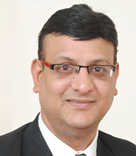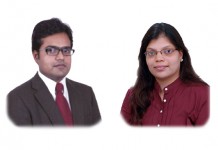Most of the Indian traditions place a moral obligation on sharing knowledge for free with the community at large. Following this knowledge sharing tradition, in the past Indians have created major scientific advancements in medicine (think Ayurveda), lifestyle (yoga), astronomy, navigation, mathematics, construction, etc., that are freely used by all.

LexOrbis律师事务所
专利申请业务负责人
新德里
Head of Patent Prosecution Practice
LexOrbis
New Delhi
However, with globalisation, more and more Indians – companies as well as inventors – are required to embrace the intellectual property right protection systems, for example by filing patent applications for their innovations.
Fraction of total
While it is true that the Indian patent system is more than 150 years old, when we look at statistics relating to filing of patent applications, the total number filed in India is still a small fraction of the total number of applications being filed in the US. Even when we look at the applications filed in India for the year 2010-11, which amounted to about 39,400, the number of applications filed by Indian entities was about 8,062, a mere 20% or so of the overall filing in India.
The only silver lining is that the number of applications being filed by Indian entities is growing steadily and the rate of growth in the past decade has been in excess of 10%.
Despite all this, it still cannot be said that Indian applicants have become masters in the game of patent filing. In an era when patents are treated as offensive weapons for warding off competition, as well as commodities in themselves (which are traded), rather than as recognition certificates granted to the inventor for contribution to the knowledge pool, prolonging the life of a patent plays a critical role in determining the extent of success of a company owning the patent.
US strategies unavailable
While the law in the US recognises and awards patent term extensions and patent term adjustments, in India no such strategies are available. We also do not anticipate the Indian Patents Act to be amended to introduce any such provisions in the near future. Under the circumstances, it becomes important for Indian companies to look at avenues for maximising the term of the patent thus granted in India.
Analysing the Indian Patents Act, it can be observed that an applicant can follow any one of the following ways to file an Indian application:
(a) file an ordinary application accompanied by a provisional specification, followed by filing a complete specification within 12 months;
(b) file an ordinary application accompanied by a complete specification;
(c) file a national phase application in India (based on an already filed Patent Co-operation Treaty (PCT) application); and
(d) file a convention application claiming priority from an application filed in a Paris Convention country, wherein the application filed in a Paris Convention country could be accompanied by a provisional specification or a complete specification.
If we compare the above routes to determine the most commonly followed, it can be noticed that routes (a) or (b) are mostly followed by Indian companies and inventors, while routes (c) or (d) are mostly followed by foreign companies and inventors. Many Indian companies and inventors are not aware of the fact that they could follow routes (c) or (d), and hence are also not aware of the advantages that could be derived from them.
Alternative route
Instead of following either route (a) or (b), it may be beneficial for the Indian company or inventor to file an application in India – accompanied either by a provisional specification or a complete specification – and later file a convention application in India claiming priority from the application already filed. In other words, in the following scenario, the Indian company would file a first Indian application, and file a second Indian application close to the 12-month period, when the second Indian application claims priority from the first Indian application.
Yet another approach could be to file an application in India – accompanied either by a provisional specification or a complete specification – followed by filing a PCT application claiming priority from the Indian application, and eventually filing a national phase application in India on the basis of the PCT application.
In other words, in the following scenario, the Indian company would file a first Indian application, and file a PCT application close to the 12-month period, claiming priority from the first Indian application, and eventually file a national phase Indian application on the basis of the PCT application.
When following either of the above-mentioned routes, the Indian company or inventor is poised to reap a benefit in terms of the term of the patent, to the extent of one year.
The benefit is derived because of the fact that the first Indian application will be treated only as a priority application – and hence, sets the deadline only for prior arts – while the term of the patent in India gets calculated from the date of filing of the second Indian application in the first scenario, or from the PCT application in the second scenario.
It’s also interesting to bring to the kind attention of readers that provisions similar to the one discussed above are made available by the US Patent and Trademark Office, and a substantial percentage of applicants take advantage of them.
Additional price
It is pertinent to mention that while the above suggested routes tend to provide a benefit in terms of the term of the patent, the benefit comes at an additional price – the official fee for filing of the subsequent application has to be paid. However, taking into account the fact that the monopoly is being extend by a period of one year, and that the additional cost can be as low as US$20, these options are very attractive.
So, applicants have to be aware of the nuances of the act and strategise their internal policies so as to obtain the maximum mileage from the provisions of the act.
709/ 710, Tolstoy House, 15-17 Tolstoy Marg New Delhi – 110 001 India
电话 Tel: 91 11 2371 6565
传真 Fax: 91 11 2371 6556
电子信箱 E-mail:
deepak@lexorbis.com
www.lexorbis.com






















